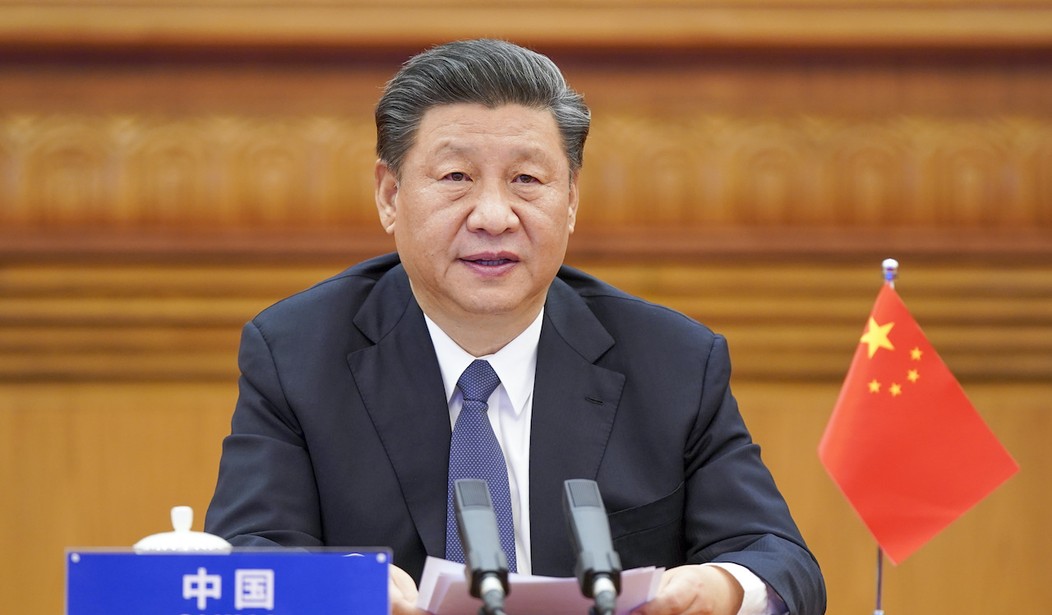In a not-so-surprising effort at victim-blaming, Beijing is now accusing the United States of engaging in “information warfare” for asserting that the balloon which sauntered its way across US airspace last week was engaged in surveillance, not just a weather balloon that lost its way.
China on Thursday said U.S. accusations that a downed Chinese balloon was part of an extensive surveillance program amount to “information warfare against China" https://t.co/Dsah2qcirX
— TIME (@TIME) February 9, 2023
At Thursday’s daily briefing, Chinese Foreign Ministry spokesperson Mao Ning repeated China’s insistence that the large unmanned balloon was a civilian meteorological airship that had accidentally blown off course and that the U.S. had “overreacted” by shooting it down.
“It is irresponsible,” Mao said at a daily briefing. The latest accusations “may be part of the U.S. side’s information warfare against China.”
During the briefing, Mao stated:
“Despite China’s repeated explanations and communication, the U.S. insisted on overreacting. And the use of force — it is irresponsible. As for the U.S. to claim that the balloon is part of a so-called fleet, I’m not aware of that. I think this may be part of the U.S. side’s information warfare against China. The international community sees clearly who is the one in the world conducting the most spy, surveillance and monitoring activities.”
What exactly is “information warfare”? NATO defines it as:
Information warfare is an operation conducted in order to gain an information advantage over the opponent. It consists in controlling one’s own information space, protecting access to one’s own information, while acquiring and using the opponent’s information, destroying their information systems and disrupting the information flow. Information warfare is not a new phenomenon, yet it contains innovative elements as the effect of technological development, which results in information being disseminated faster and on a larger scale.
While the terminology itself arguably implies an escalation, it’s safe to say both the US and China have been engaged in “information warfare” for quite some time — as have most developed nations.
Despite China’s attempted gaslighting, US officials aren’t playing along. According to a “senior State Department official“:
China’s military is likely behind a bold aerial spy program that has targeted more than 40 countries on five continents with high-altitude surveillance balloons similar to one the U.S. shot down over the Atlantic Ocean coast last weekend.
As noted by the AP, these details are intended to refute China’s “information warfare” accusation.
U.S. officials have dismissed China’s claims and agents from the FBI and the Naval Criminal Investigative Service are cataloguing debris recovered from the ocean and transporting it for further processing.
When similar balloons passed over U.S. territory on four occasions during the Trump and Biden administrations, the U.S. did not immediately identify them as Chinese surveillance balloons, said Brig. Gen. Pat Ryder, the Pentagon press secretary.
But he said “subsequent intelligence analysis” allowed the U.S. to confirm they were part of a Chinese spying effort and learn “a lot more” about the program.
“I can assure you this was not for civilian purposes … We are 100% clear about that,” Ryder said.
Top administration officials were briefing members of Congress on the Chinese balloon surveillance program in classified sessions on Wednesday and Thursday.
Whether, and to what extent, our inspection of the recovered debris will yield helpful information remains to be seen. As streiff rightly notes in this excellent piece, the entire incident raises more questions than there are answers, including:
Why, if, in the words of General VanHerck, the balloon was not shot over the Pacific because it posed no threat, was it necessary to shoot the balloon down over the Atlantic? The balloon had completed its mission and undoubtedly uploaded its information to a server somewhere in China.
What was the danger posed that prevented shooting down the balloon over mostly empty areas of Alaska, the Canadian provinces of Yukon, Northwest Territories, and Alberta, northern Idaho, and parts of Montana and Wyoming? Are we supposed to believe that there is no place in those areas where you can drop a (maybe) 100-foot-long gondola without hitting people or homes?
Who is the commander-in-chief? Under what set of circumstances does the president give a legal order, and the military responds with, “yeah, no?” I’d thought that was a unique feature of the Deep State’s interactions with President Trump, but now I think there may be a much larger problem. Is there a policy manual on this somewhere? Because I think we’d all like to know.
Did the Department of Defense really think it could let this balloon transit the US with no questions asked? The answer seems to be yes. If so, there is a desperate need for a house cleaning in the Department of Defense. Is it US policy to allow this kind of activity without mentioning it to the public unless it is pointed out to the media by random civilians?














Join the conversation as a VIP Member